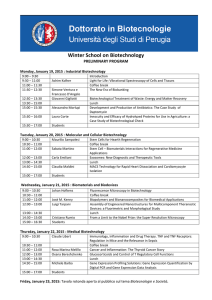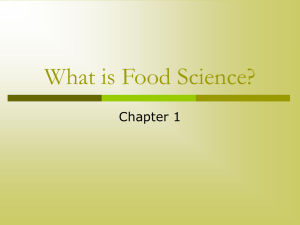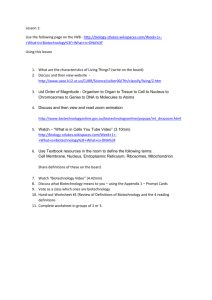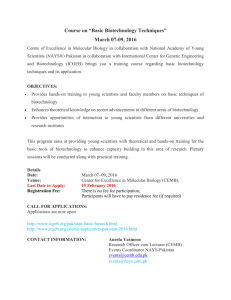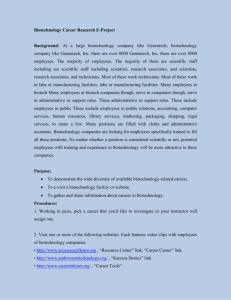Statistical Definition of Biotechnology
advertisement
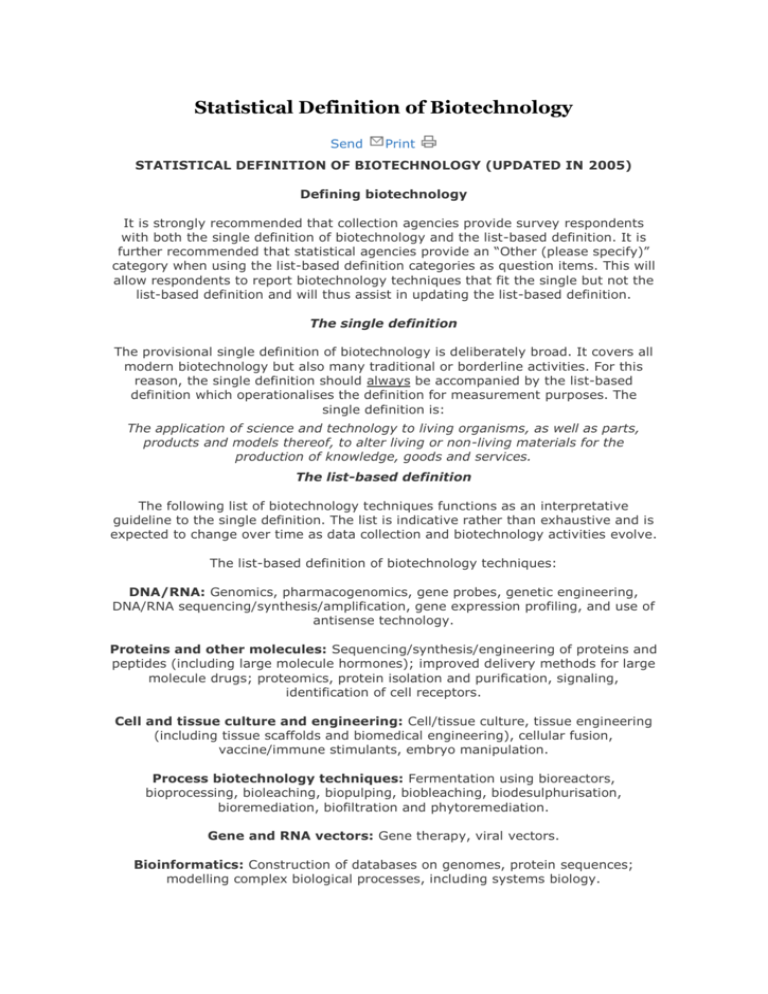
Statistical Definition of Biotechnology Send Print STATISTICAL DEFINITION OF BIOTECHNOLOGY (UPDATED IN 2005) Defining biotechnology It is strongly recommended that collection agencies provide survey respondents with both the single definition of biotechnology and the list-based definition. It is further recommended that statistical agencies provide an “Other (please specify)” category when using the list-based definition categories as question items. This will allow respondents to report biotechnology techniques that fit the single but not the list-based definition and will thus assist in updating the list-based definition. The single definition The provisional single definition of biotechnology is deliberately broad. It covers all modern biotechnology but also many traditional or borderline activities. For this reason, the single definition should always be accompanied by the list-based definition which operationalises the definition for measurement purposes. The single definition is: The application of science and technology to living organisms, as well as parts, products and models thereof, to alter living or non-living materials for the production of knowledge, goods and services. The list-based definition The following list of biotechnology techniques functions as an interpretative guideline to the single definition. The list is indicative rather than exhaustive and is expected to change over time as data collection and biotechnology activities evolve. The list-based definition of biotechnology techniques: DNA/RNA: Genomics, pharmacogenomics, gene probes, genetic engineering, DNA/RNA sequencing/synthesis/amplification, gene expression profiling, and use of antisense technology. Proteins and other molecules: Sequencing/synthesis/engineering of proteins and peptides (including large molecule hormones); improved delivery methods for large molecule drugs; proteomics, protein isolation and purification, signaling, identification of cell receptors. Cell and tissue culture and engineering: Cell/tissue culture, tissue engineering (including tissue scaffolds and biomedical engineering), cellular fusion, vaccine/immune stimulants, embryo manipulation. Process biotechnology techniques: Fermentation using bioreactors, bioprocessing, bioleaching, biopulping, biobleaching, biodesulphurisation, bioremediation, biofiltration and phytoremediation. Gene and RNA vectors: Gene therapy, viral vectors. Bioinformatics: Construction of databases on genomes, protein sequences; modelling complex biological processes, including systems biology. Nanobiotechnology: Applies the tools and processes of nano/microfabrication to build devices for studying biosystems and applications in drug delivery, diagnostics etc.



